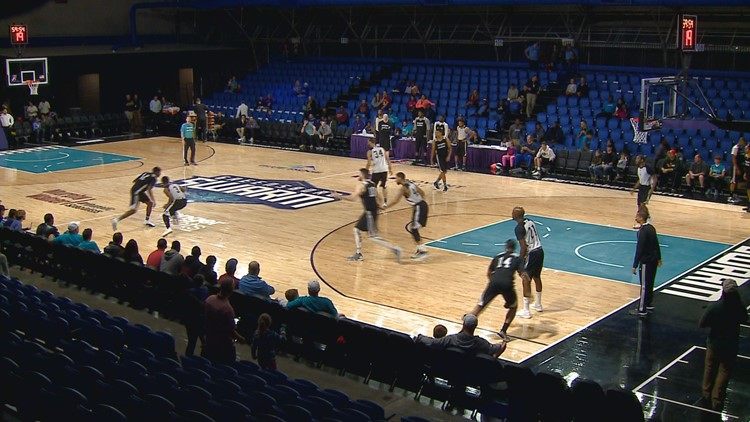Thursday the NBA announced a G-League alternative to college for high level high school basketball players. According to the press release, “elite talent” who are not old enough to play in the NBA would be eligible to sign a contract to play in their development league.
The NBA G League today announced a Select Contract as part of a comprehensive professional path that will be available, beginning with the 2019-20 season, to elite prospects who are eligible to play in the NBA G League but not yet eligible for the NBA. The contracts, which will include robust programmatic opportunities for development, are for elite players who are at least 18 years old and will pay $125,000 for the five-month season.
NBA G League Select Contracts are designed for year-round professional growth and will include opportunities for basketball development, life skills mentorship and academic scholarship.
It sounds like a good idea in theory. Athletes who are on the pro-track get to monetarily capitalize on their talent without the stringent restrictions that come with NCAA regulated programs, but there are several intangibles that haven’t been considered.
Here are three reasons why this model won’t work:
1: Exposure
When is the last time you went to a G-League game? When is the last time you watched a G-League game on television? Better yet, what is the name of the closest G-League affiliate in your area? If you had to think about it or didn’t have a response to one or more of these questions, my first point has been made. According to the NCAA, over 97 million people watched their annual basketball tournament and over 136,000 people attended the Final Four. Blue blood teams like UNC, Duke, Kentucky and Kansas regularly play in nationally televised games. People know who they are. People see them. Will an elite-level talent get the same exposure and recognition playing for the Fort Wayne Mad Ants? Nah.
2: Treatment
When is the last time you think the Kentucky basketball team woke up at 3:30 in the morning to catch 5 am commercial flight or Duke took an 8 hour bus ride to play in a game? I’ll answer that for you; it doesn’t happen. Private planes and police escorts are the norm. State of the art gyms and facilities are the expectation. Cutting edge technology has been created to maximize the potential of players. These guys eat good, sleep good, play good. For one year they get to have the time of their lives without the stress of being a grown up. Just ask any professional athlete and they’ll tell you that being in the pros is great and they wouldn’t give it up for anything, but the most fun they’ve had was playing in college. No shade to South Dakota, but Sioux Falls isn’t offering that.
3: Money
I’m not sleeping on $125,000. It’s definitely no chump change and a lot of people would love to earn that for 5 months of work, but it pales in comparison to what elite talent will make once they’re drafted. According to Forbes, last year’s rookie lottery picks earned an average of $4.8 million. Now, how does that $125,000 look compared to that? If the NBA wants to realistically compete with the NCAA for top talent they’re going to have to come a lot higher. Sneaker companies, although illegally, are offering players far more than this to go to top programs. And we haven’t even noted how playing in the G league against older more experienced talent may expose some players’ deficiencies – negatively impacting their draft status and rookie contract amounts.
The bottom line is, this won’t fix the NBA and NCAA’s problem. If guys are talented enough to play in the big leagues out of high school they should be allowed to play in the big leagues. Lowering the age of eligibility is the only logical answer, anything else only tries to mask the issue instead of repairing it.
